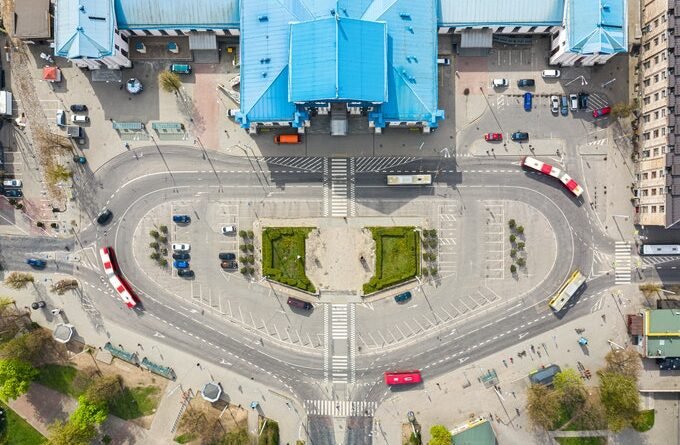Industrial transformation according to EU climate goals: green energy is the only solution
Lina Svaldenienė
One of the most relevant topics for the current industrial transformation is clean energy, which would bring Lithuanian industry closer to the set climate goals.
Industrial transformation, like digitalisation or the circular economy, are terms of daily use in the vocabulary of professionals in private and public sectors as well as politicians; the importance of these concepts is unquestionable. Once everyone agrees that these processes are both national and Union’s priorities, the question arises as to what to do and where to focus so that we do not cross the red lines. The brightest of these is 1.5⁰C at the 2050s mark. The role of industry in achieving climate neutrality is enormous, and industrial transformation without green and affordable energy is difficult.
Clean and cheap energy to reduce the footprint
The greenest fuel is hydrogen, which requires only water and electricity to produce, but the role of the industrial decarboniser can only be entrusted to hydrogen once its price is reasonable. “We can talk about the hydrogen economy, but our job is to make sure the cost of green hydrogen doesn’t exceed $1.5 per kilogram. This means that politicians, scientists and businesses need to be very focused and make the necessary legal and financial decisions,” said KTU Rector Prof. Eugenijus Valatka, opening the conference “Lithuanian Science and Industry 2021”.

Prime Minister I. Šimonytė agrees that the Green Deal is not a luxury or a pursuit of a trend, but a path to survival and transition to a new quality. Climate change and the energy crisis have highlighted not only the gaps in the existing system but also poor attitudes. “It no longer makes sense to discuss whether we need a circular economy. We need to ask what changes are necessary to make the transition to this economic model as efficient as possible,” she said. – The transformation of the industrial sector is a time of new opportunities. To reduce our carbon footprint, we need to ensure a secure, clean, affordable energy and raw material supply.”
The second pillar of industrial change is innovative technologies
The science has an important role to play here in developing leading-edge clean technologies. The President of the Confederation of Industrialists Vidmantas Janulevičius also emphasizes the importance of affordable and clean technologies: “The Lithuanian economy pursues common goals with the entire EU. Rapid change is needed to adapt to the new requirements and to transform the industry and the operating models of our companies. The state needs a clear strategy on how it intends to promote change in the face of decarbonisation or the Green Deal in Lithuania, the challenges of the circular and digital economy, ”says V. Janulevičius.
The European Commission emphasizes that industry has a key role to play in this process of change. According to the President of Industrialists, this is relevant for all industrial value chains, including energy-intensive sectors, which are especially numerous in the Kaunas region. He is convinced that companies must not only make an effort to reduce their carbon footprint, but also accelerate the transformation by offering affordable, clean technologies. “For an industry that is increasingly competitive in a green and circular economy model, it will need secure, clean, affordable energy, an uninterrupted supply of raw materials, which is problematic today,” he said.
Consumption efficiency must be a priority
In its 2021 Lithuanian Energy Report, the International Energy Agency (IEA), which regularly conducts in-depth reviews of the energy policies of its members, partners and associated countries, assessed Lithuania’s significant progress in implementing a vision of secure, competitive and green energy in the Baltic region. The government has supported fundamental reforms in the electricity and natural gas markets and continued to integrate into the EU energy system and markets. The development of renewable energy sources, especially bioenergy and wind, has reduced the carbon intensity of the energy and heating sectors over the last decade. To achieve the ambitious goals, the IEA recommended today that Lithuania prioritize energy efficiency, develop a strong renewable energy strategy and reform energy taxes.
Each of these recommendations is reflected in Lithuanian Economic Recovery and Resilience plan. One of the reforms planned is to increase electricity production in Lithuania. The aim of the reform is to encourage not only the production but also the use of the most cost-effective technology. In particular, this reform aims to:
- To increase the production of electricity from renewable energy sources (RES) to at least 7 TWh to 2030, which will ensure that 50% of electricity from RES is connected to total electricity consumption;
- Increase the capacity of local electricity production;
- To support the most cost-effective technologies in order to facilitate the development of RES electricity capacity;
- Gradually integrate the producers of RES electricity into the market;
- To ensure minimum financial burden to electricity consumers;
- To ensure non-discriminatory import of electricity and to allow other Member States to benefit from the support mechanism provided for in the draft of Law on Renewable Energy Sources;
- To ensure that decommissioned power plants are dismantled;
- To Ensure that electricity is not produced at negative prices;
- To create the right conditions for generating consumers and RES communities.
At the end of the summer, the European Commission paid Lithuania 289 million EUR pre-financing, i.e. 13 percent in accordance with the financial allocations for the country for economic recovery and resilience. It is planned that Lithuania will receive a total of 2.22 billion EUR grants during the entire implementation period of the plan.




